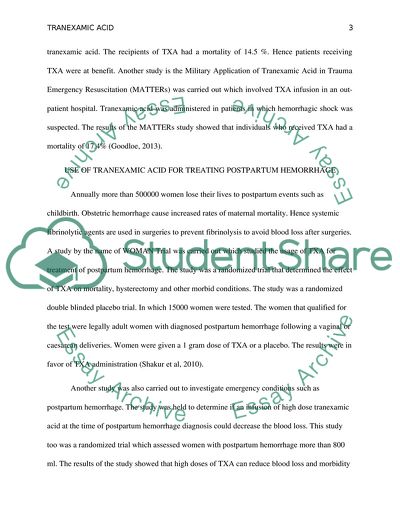Cite this document
(“Tranexamic acid and it's uses in pre-hospital an emergency medicine Research Paper”, n.d.)
Tranexamic acid and it's uses in pre-hospital an emergency medicine Research Paper. Retrieved from https://studentshare.org/health-sciences-medicine/1665009-tranexamic-acid-and-its-uses-in-pre-hospital-an-emergency-medicine
Tranexamic acid and it's uses in pre-hospital an emergency medicine Research Paper. Retrieved from https://studentshare.org/health-sciences-medicine/1665009-tranexamic-acid-and-its-uses-in-pre-hospital-an-emergency-medicine
(Tranexamic Acid and it'S Uses in Pre-Hospital an Emergency Medicine Research Paper)
Tranexamic Acid and it'S Uses in Pre-Hospital an Emergency Medicine Research Paper. https://studentshare.org/health-sciences-medicine/1665009-tranexamic-acid-and-its-uses-in-pre-hospital-an-emergency-medicine.
Tranexamic Acid and it'S Uses in Pre-Hospital an Emergency Medicine Research Paper. https://studentshare.org/health-sciences-medicine/1665009-tranexamic-acid-and-its-uses-in-pre-hospital-an-emergency-medicine.
“Tranexamic Acid and it'S Uses in Pre-Hospital an Emergency Medicine Research Paper”, n.d. https://studentshare.org/health-sciences-medicine/1665009-tranexamic-acid-and-its-uses-in-pre-hospital-an-emergency-medicine.


